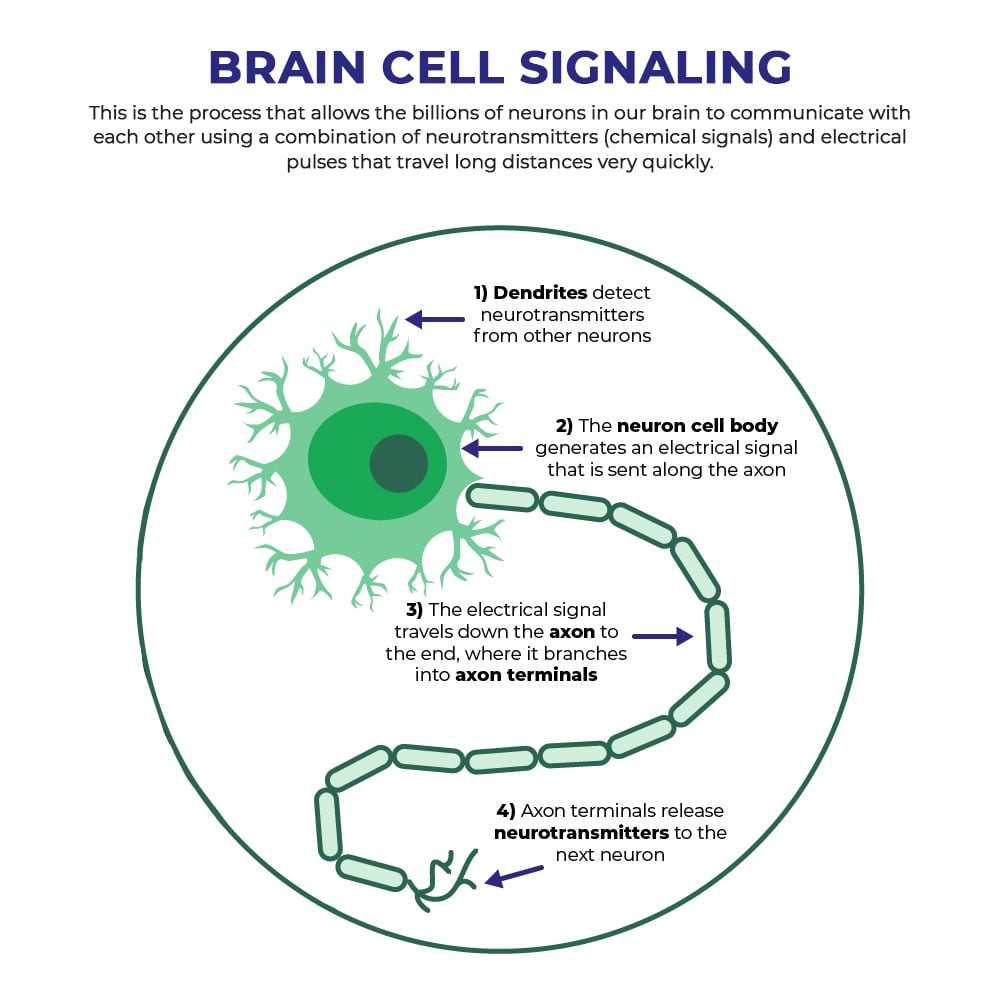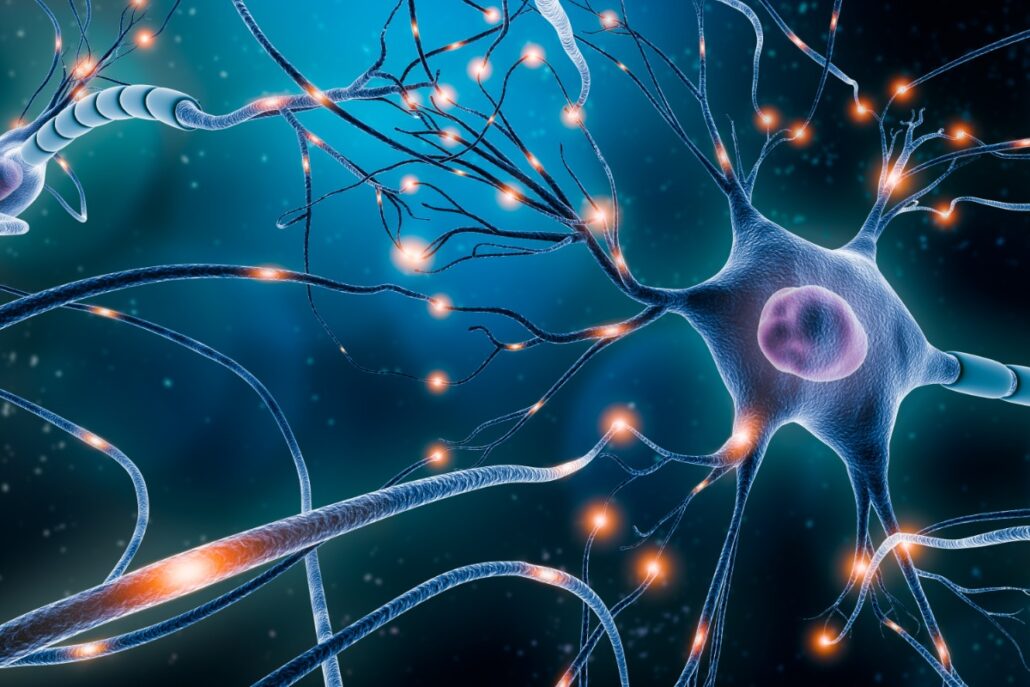“To understand the actions of drugs on the brain, to grasp the impact of diseases upon the central nervous system, and to interpret the behavioral consequences of psychiatric medicines, one must be fluent in the language and principles of chemical neurotransmission.” – Stephen M. Stahl, MD, PhD
Neurons, also known as nerve cells, are the fundamental units of the nervous system. These highly specialized cells are structurally designed to both send and receive information. Efficient neuronal communication, or neurotransmission, is essential for the functioning of the nervous system and can be described anatomically, electrically, and the focus of our discussion today: chemically.1
What is neurotransmission and how do drugs impact it?
In simplistic terms, the purpose of neurotransmission is to transfer a signal from a sending neuron to a receiving neuron across the tiny gap that separates them, known as the synapse.
Receptors are present on both sides of the synaptic cleft and are key elements of chemical neurotransmission and psychopharmacology. In classic synaptic neurotransmission, stimulation of a presynaptic neuron causes electrical impulses to be sent to its axon terminal. In order to cross the synapse, these electrical impulses are converted into chemical messengers. These messengers are stored in small vesicles in the presynaptic neuron and released to stimulate the receptors of a postsynaptic neuron. The specialized molecules that carry the signals across the synapses are called neurotransmitters.1-2

What are Neurotransmitters and Neuromodulators?
There are several known neurotransmitters and neuromodulators essential to the complex processes of the brain so let’s focus our discussion today on the neurotransmitters that almost all of the psychotropic agents target: the monoamine neurotransmitters.
The monoamines are a class of molecules that share a particular chemical structure: one amino group connected to an aromatic ring by a two carbon chain. The monoamines are derived from aromatic amino acids and depending on the specific precursor, they can be classified into two categories, the catecholamines (dopamine and norepinephrine) and the indolamines (serotonin).3

Dopamine acts on numerous receptors in various brain regions and is essential to executive function, motor control, emotion, reward, and several other brain functions.
Norepinephrine acts on adrenergic receptors and influences attention, focus, stress, and more.4

Serotonin is critical for mood regulation, appetite, sexual function, behavior, and much more5.
The monoamines are vital to the central nervous system and monoamine dysfunction has been largely examined in the pathology of various psychiatric disorders. Knowing the physiological functions of the monoamines and recognizing the consequences of malfunctioning neurotransmission is essential for understanding psychopharmacology.
You have probably heard of the “classic monoamine hypothesis of depression”, the theory that depression is a consequence of reduced, depleted, or dysfunctional monoamine neurotransmitters. This hypothesis has evolved with time and now proposes that the deficient monoamine signal transduction causes an upregulation of postsynaptic monoamine neurotransmitter receptors.
This understanding has led to major improvements in antidepressant pharmacotherapy as the pharmacodynamic mechanisms of all known antidepressants act to boost neurotransmission at one or more of the monoamine neurotransmitter systems.1
In Conclusion
As discussed in the Pharmacodynamic (PD) Genes Introduction, pharmacodynamics is the study of how a drug interacts with biological targets (receptors, transporters, enzymes, etc) at the molecular level in order to produce an effect.
Groundbreaking advancements in science now allow us to consider individual differences in these biological targets with pharmacogenetic (PGx) testing of pharmacodynamic genes. There are several genetic biomarkers that may impact an individual’s response and/or risk of side effects. Genomind PGx analyzes 15 PD genes and it may be useful to think of them in the following way:
| Monoamine Involved | Pharmacodynamic Gene |
| Serotonin | 5HT2C, HTR2A, MTHFR, SLC6A4 |
| Dopamine | COMT, DRD2, MTHFR |
| Norepinephrine | ADRA2A, COMT, MTHFR |
To learn about each pharmacodynamic gene individually, read our Gene Spotlights on genes like MTHFR, SLC6A4, DRD2, and more.
Are You Ready to Upgrade Your Practice with Genomind?
Genomind’s pharmacogenetic testing is the most advanced and comprehensive mental health pharmacogenetic test available. By registering, you can access 24 genes related to mental health, 130+ medications, 10+ conditions, state-of-the-art tools, and 360 degrees of support.
References
- Stahl, S. M. Stahl’s Essential Psychopharmacology: Neuroscientific Basis and Practical Applications. Cambridge University Press. 2013.
- NIDA. Impacts of Drugs on Neurotransmission. National Institute on Drug Abuse Website. 2017.
- Monoamines. Segen’s Medical Dictionary. 2011.
- Sheffler ZM, Reddy V, Pillarisetty LS. Physiology, Neurotransmitters. StatPearls Publishing; 2020.
- Bakshi A, Tadi P. Biochemistry, Serotonin. StatPearls Publishing; 2020.

